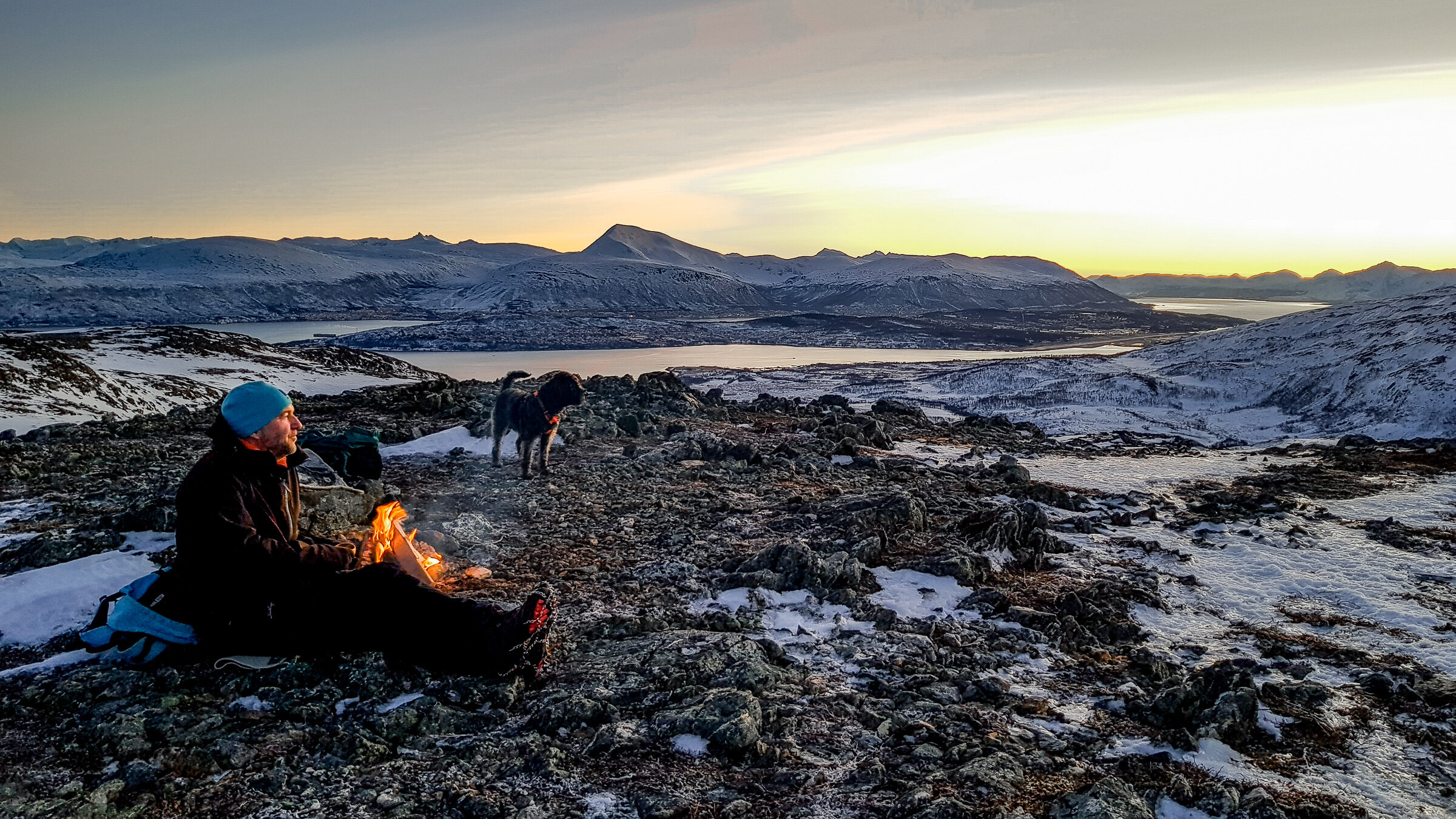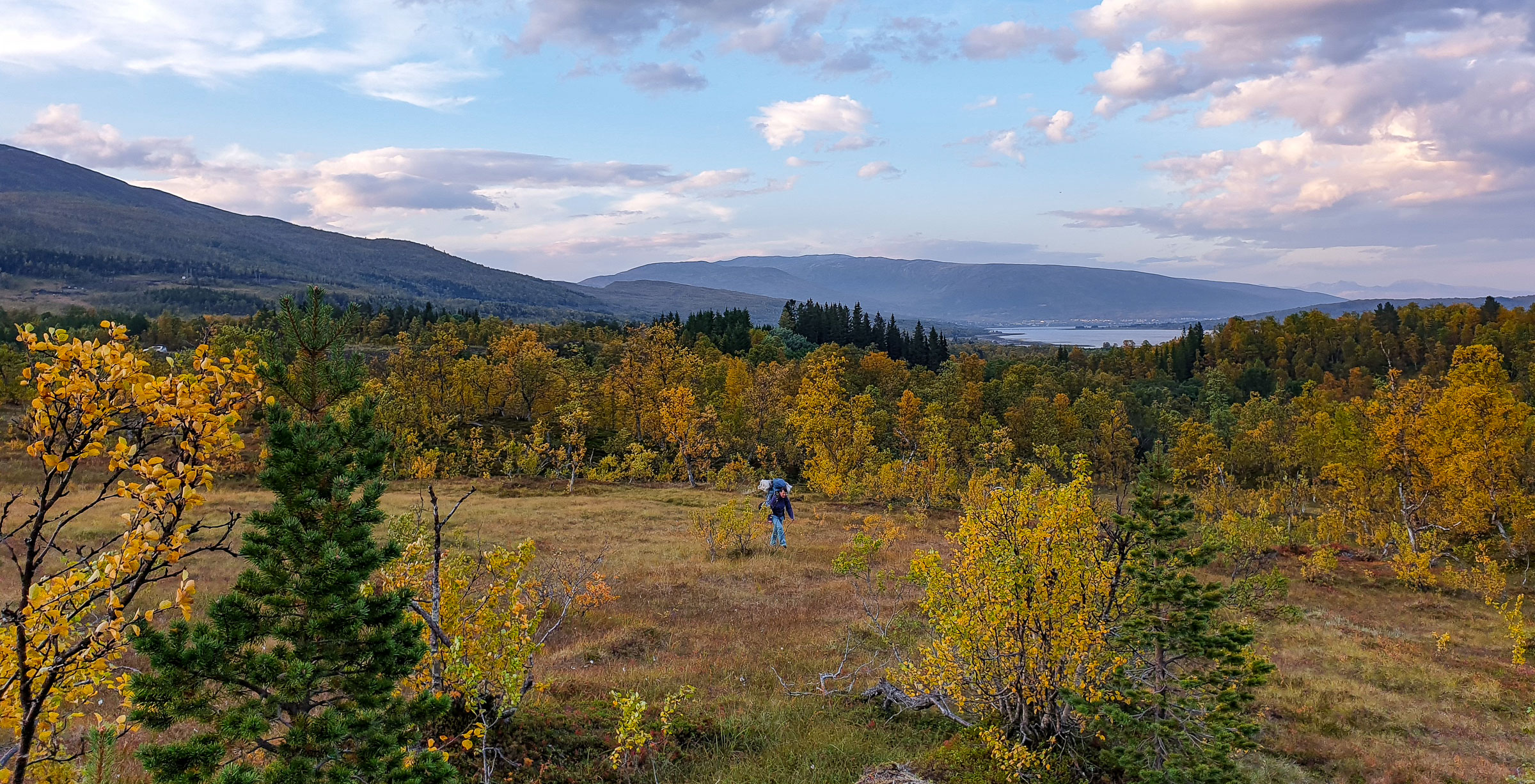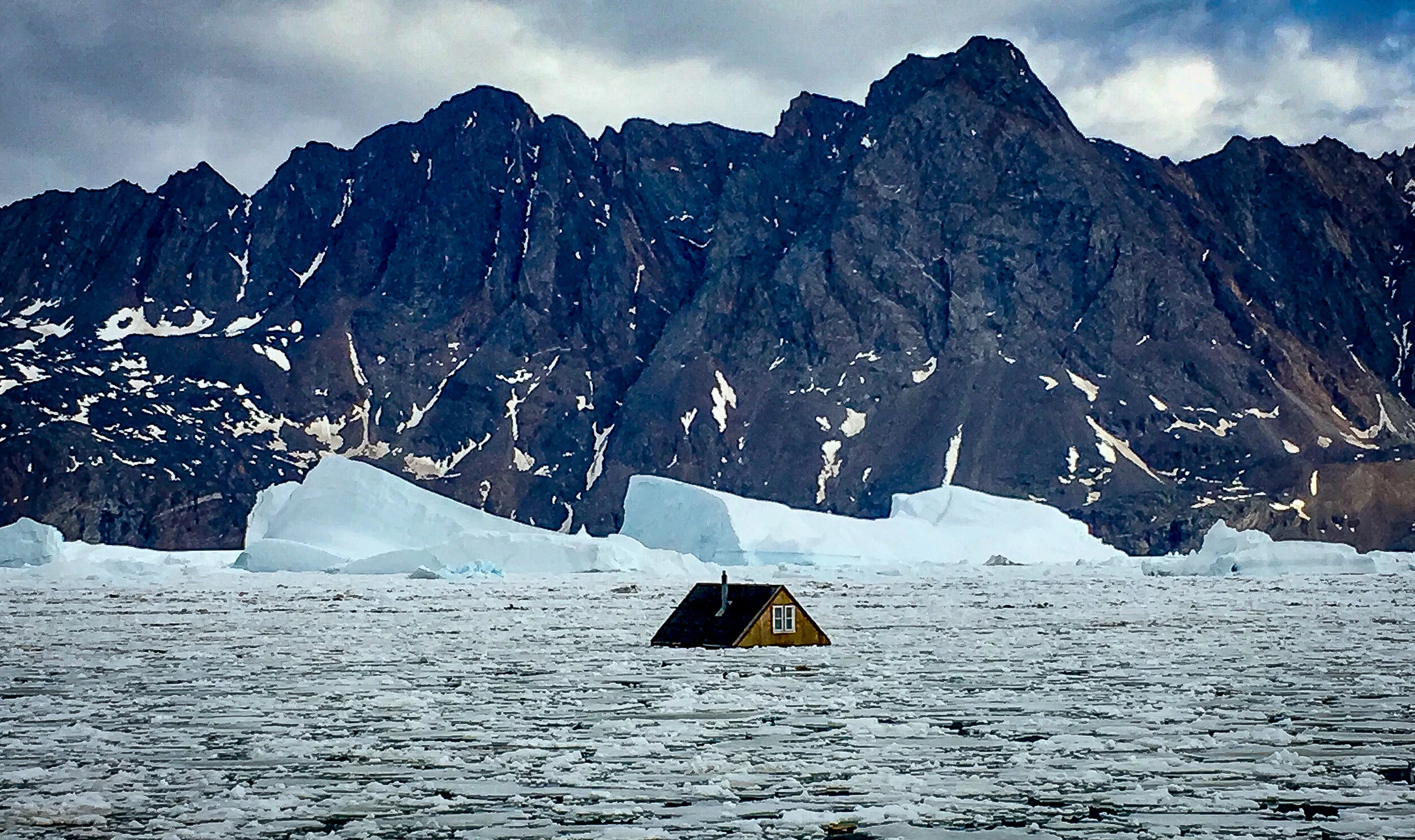Arctic Travel - The Double Sided Right To Roam
ARCTIC TRAVEL / NORWAY
Writer: Helge M. Markusson
Photograps: Helge M. Markusson, Mariann Lødemel
October 2019
An American I once met at a conference reception told a joke: Why did the astronauts in the Apollo program back in the sixties have to land in the Pacific and not on American soil?
- because they wouldn't risk being shot for trespassing.
A few years ago we were hiking in the north of Italy. Beware of the dog and the owner. It was the text on a sign hanging on a high fence. The sign was decorated with the image of a dog and a gun.
Now and then I think about that joke and the sign as I do my hikes in the region where I live. If there is something we Norwegians know how to appreciate it is walking in the mountains and the woods - and the further north you move the better the conditions are. Inhabitants above the Arctic Circle or the Arctic as the rest of the world calls it, take it for granted that we can walk, ski, bike and paddle in all areas. The general rule is that as long as we move with the help of our muscles, no one can refuse us to go anywhere we want.
The right to roam in Norway applies to open country, sometimes also known as "unfenced land". Now the tourism-industry wants a bigger piece of it.
Open Country
The right to roam in Norway applies to open country, sometimes also known as "unfenced land", which is uncultivated land. In Norway, the term covers most shores, bogs, forests, and mountains. Small islands of uncultivated land within cultivated land are not regarded as open country.
It does not apply to “fenced land”, which is private, and includes cultivated lands, such as plowed fields with or without crops, meadows, pastures, and gardens, as well as young plantations, building plots, and industrial areas.
However, you have access to fields and meadows from October 15th to April when the ground is frozen or covered with snow.
Swiss made
It was the Swiss who were first out. In 1907, they created a law that allowed everyone to move freely in forests and fields, including privately owned areas. They could pick wild berries and flowers.
In northern Europe, Icelanders were the first, enacting a public law of free access in 1956.
Then followed Norway, Sweden, and Finland. Denmark has a slightly different interpretation of the law, but in the main, it is about giving people the same rights to nature as in the rest of the Nordic countries. In Scotland, the right to access was passed in 2003. Also, England and Germany have laws that modify the right to roam.
JONAA©Helge M. Markusson
Tromsø tries hard to copy Reykjavik
My hometown, Tromsø, tries hard to copy Reykjavik in terms of tourism. During my first visit to Reykjavik three years ago, I got the rumors confirmed; the city had become a tourist machine.
The following year, a nice Canadian bartender welcomed me to the world's most expensive city.
Everyone knows that Iceland has invested heavily in tourism and succeeded. It matters to the country's economy that the hotels in Reykjavik are filled by well-heeled Americans who believe they have Arctic harbors and who have enough money to spend the city and the surrounding area.
During a hotel-breakfast, one early morning last year, I overheard a Florida lady who had heard of someone who had talked to someone who had seen the Northern Lights and that it should have been "totally amazing!"
Same shit, new wrappings
Strolling the Laugavegur is like walking in any tourist town; The signs on and off the buildings are almost exclusively aimed at visitors. Bars and restaurants, hotels and tour operators promoting whale watching, authentic Icelandic food, and home knit sweaters. A lot in common with any tourist street anywhere in the world; same shit just new wrappings.
I smiled a little indulgently the first time, but when I now walk the Storgata in Tromsø, it is only to recognize that the similarity to Laugavegur is stumblingly close. Comparing population numbers and looking per capita, there are now more tourists in Tromsø than in Reykjavik. No other Norwegian city can show an occupancy rate and net price level for hotels other than Tromso. The growth is enormous, the cruise ships are in line, several large hotels will be opened and a new international terminal will be built at the airport.
With few exceptions, there is a reason why tourists want to go to Reykjavik and Tromsø, and it is the easy access to magnificent and free nature with all its content. This is where the right to roam comes in.
Should we give travel operators free access to the natural areas, without any consequences?
JONAA©Mariann Lødemel
Large scale tourism and lawless conditions
In Norway, we no longer only talk about tourists coming north to just look at things, such as northern lights, reindeer and whales. This is large-scale tourism, which leaves traces in terms of climate, environment, and resources.
Recently, the country's largest financial newspaper, Dagens Næringsliv, used an impressive number of pages to cover the fishing tourism on Sørøya in Finnmark, a half-hour flight north from Tromsø. Fishing tourism has exploded in scope for the last 15 years, and it is free for anyone to rent a boat to anyone, and then they can fish as they please along the entire Norwegian coast. The article describes lawless conditions, foreign actors almost impossible to control, large-scale smuggling of fish out of the country, and not least the contempt for resources, sustainability, and culture. The fishing tourists only cut out the best fillet of fish and throw the rest at sea, to the great indignation and sorrow of the residents.
Drastic steps
Unfortunately, we who live here are no better. More and more cultural landscapes and fields are being used, most often in response to an expressed need for the good of society. But there are also specific cases where our purely private material needs must be met.
In Tromsø, the municipality's politicians have taken the drastic step in expropriating private land in a vulnerable wetland area with Sami cultural monuments. The reason is that a consortium of business players will develop a large area, over 250.000 square meters, for cottages and holiday homes. The upside given to the town's residents will be a ski slope, in addition to the one that already exists.
Critics of the plans are met with arguments that they do not want economic growth and increased well-being, and you need a strong back to oppose such.
Paradoxes of economic growth
The same paradox is experienced by locals on the islands of Lofoten. It is difficult to argue against economic growth in the form of more tourists, but it is not pleasant that people on a camping trip use your garden as a toilet.
Our part of the Arctic is different from what many outside people imagine. We live here, we use the surroundings and we appreciate it. We who have grown up here know how vulnerable nature is, and how long it takes for wounds to heal.
In that perspective, the right to roam is both a blessing and a threat. ▢
No other Norwegian city can show an occupancy rate and net price level for hotels other than Tromso. The growth is enormous, the cruise ships are in line, several large hotels will be opened and a new international terminal will be built at the airport
JONAA©Helge M. Markusson
Helge M. Markusson works as Outreach Coordinator at The Fram Centre (FRAM High North Research Centre for Climate and the Environment). Author and columnist. Former journalist of newspapers, radio and TV. Has also been involved in a series of smaller and bigger culture projects. Raised in Northern Norway, living in Tromsø, Norway. Helge is a member of the JONAA founding team.



















